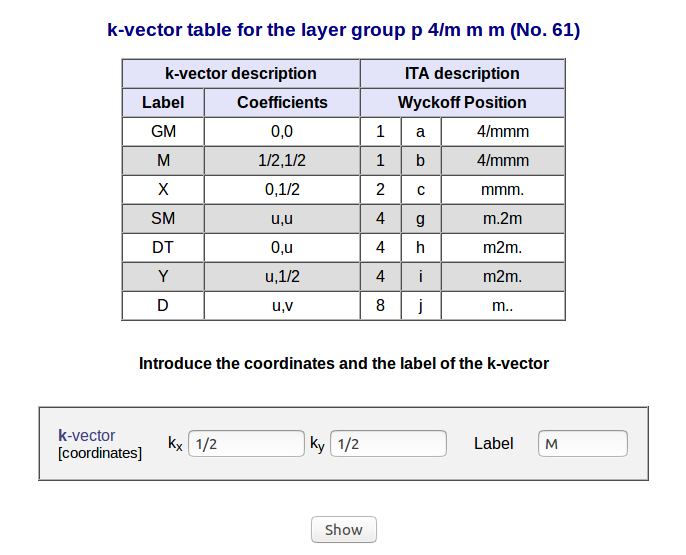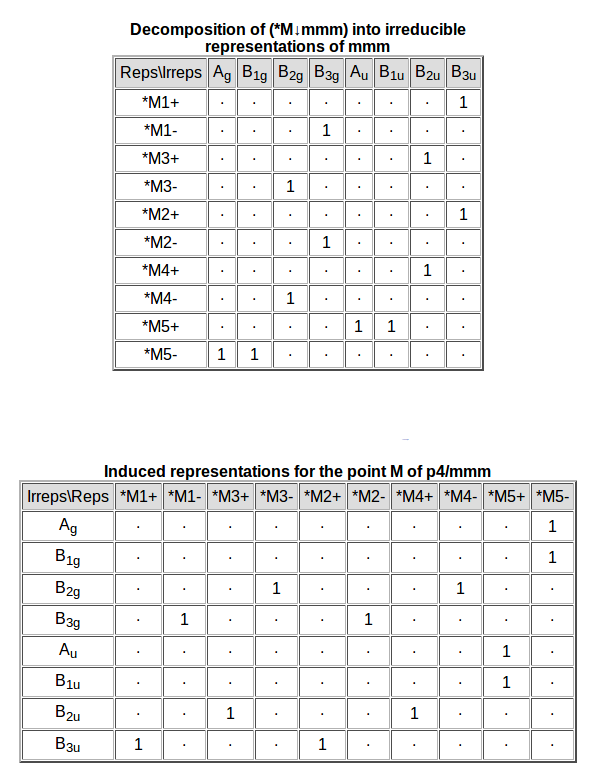LSiteSym - Site-Symmetry method apply to layer groups
 |
Step 2:
- Wyckoff position: 2c
As a result the program returns a form with all the Wyckoff positions of the selected layer group. The user must choose one of the positions.
 |
Step 3:
- Representative: 0, 1/2, 0
On the next form of the program the user is asked to choose one of the possible representatives for the Wyckoff positions that was chosen on the preceding step.
 |
Step 4:
- k-vector: k=M(1/2,1/2)
On the last form of the program the user is asked to specify the k-vector, 2 coordinate must be introduced apart from its label. The k-vector table for the chosen layer group is given.
 |
Output:
As a result, a series of several tables are shown by the program. First of all a table that shows the site symmetry group for the chosen representative of the Wyckoff position. Note that each element of this group is named as gn, where n goes from 1 to N, the number of elements.
 |
The next two tables are the character tables. First, the character table for the point group of the selected Wyckoff position is shown; the irreps - irreducible representations - are written in Millikan notation. Next, the character table for the calculated site-symmetry group and the selected k-vector appear. The notation of this character table refers to the label of the k-vector and the names given to the site-symmetry group elements on the previous table.
 |
Finally, the subduction and induction tables are shown.
 |